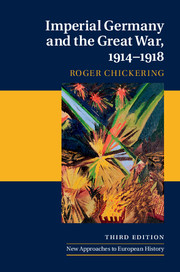Refine search
Actions for selected content:
36807 results in Cambridge Textbooks
Acknowledgements
-
- Book:
- Keys to Academic English
- Published online:
- 17 April 2023
- Print publication:
- 11 April 2023, pp xv-xv
-
- Chapter
- Export citation
Chapter 7 - Referencing and citation
- from Part II - Putting ideas to work
-
- Book:
- Keys to Academic English
- Published online:
- 17 April 2023
- Print publication:
- 11 April 2023, pp 270-335
-
- Chapter
- Export citation
Part I - Principles of Academic English
-
- Book:
- Keys to Academic English
- Published online:
- 17 April 2023
- Print publication:
- 11 April 2023, pp 1-184
-
- Chapter
- Export citation
Chapter 4 - Critical thinking
- from Part I - Principles of Academic English
-
- Book:
- Keys to Academic English
- Published online:
- 17 April 2023
- Print publication:
- 11 April 2023, pp 164-184
-
- Chapter
- Export citation
Chapter 8 - Style and presentation
- from Part II - Putting ideas to work
-
- Book:
- Keys to Academic English
- Published online:
- 17 April 2023
- Print publication:
- 11 April 2023, pp 336-385
-
- Chapter
- Export citation
Index
-
- Book:
- Keys to Academic English
- Published online:
- 17 April 2023
- Print publication:
- 11 April 2023, pp 397-406
-
- Chapter
- Export citation
Chapter 3 - Grammar and language essentials
- from Part I - Principles of Academic English
-
- Book:
- Keys to Academic English
- Published online:
- 17 April 2023
- Print publication:
- 11 April 2023, pp 100-163
-
- Chapter
- Export citation
Preface
-
- Book:
- Keys to Academic English
- Published online:
- 17 April 2023
- Print publication:
- 11 April 2023, pp xiii-xiii
-
- Chapter
- Export citation
Glossary
-
- Book:
- Keys to Academic English
- Published online:
- 17 April 2023
- Print publication:
- 11 April 2023, pp 386-389
-
- Chapter
- Export citation
Chapter 6 - Research
- from Part II - Putting ideas to work
-
- Book:
- Keys to Academic English
- Published online:
- 17 April 2023
- Print publication:
- 11 April 2023, pp 243-269
-
- Chapter
- Export citation
About the Authors
-
- Book:
- Keys to Academic English
- Published online:
- 17 April 2023
- Print publication:
- 11 April 2023, pp xiv-xiv
-
- Chapter
- Export citation
Part II - Putting ideas to work
-
- Book:
- Keys to Academic English
- Published online:
- 17 April 2023
- Print publication:
- 11 April 2023, pp 185-385
-
- Chapter
- Export citation
Chapter 5 - The essay
- from Part II - Putting ideas to work
-
- Book:
- Keys to Academic English
- Published online:
- 17 April 2023
- Print publication:
- 11 April 2023, pp 187-242
-
- Chapter
- Export citation
References
-
- Book:
- Keys to Academic English
- Published online:
- 17 April 2023
- Print publication:
- 11 April 2023, pp 390-396
-
- Chapter
- Export citation
Online resources
-
- Book:
- Keys to Academic English
- Published online:
- 17 April 2023
- Print publication:
- 11 April 2023, pp xvi-xvi
-
- Chapter
- Export citation
Acknowledgement of Country
-
- Book:
- Keys to Academic English
- Published online:
- 17 April 2023
- Print publication:
- 11 April 2023, pp i-ii
-
- Chapter
- Export citation
Chapter 1 - The history of English
- from Part I - Principles of Academic English
-
- Book:
- Keys to Academic English
- Published online:
- 17 April 2023
- Print publication:
- 11 April 2023, pp 3-57
-
- Chapter
- Export citation

Imperial Germany and the Great War, 1914–1918
-
- Published online:
- 07 April 2023
- Print publication:
- 10 July 2014
-
- Textbook
- Export citation
9 - Ex-Stars
-
- Book:
- Stellar Structure and Evolution
- Published online:
- 02 May 2023
- Print publication:
- 06 April 2023, pp 209-230
-
- Chapter
- Export citation
9 - The Uncertainty Principle
-
- Book:
- Physics Behind Music
- Published online:
- 24 May 2023
- Print publication:
- 06 April 2023, pp 161-170
-
- Chapter
- Export citation
